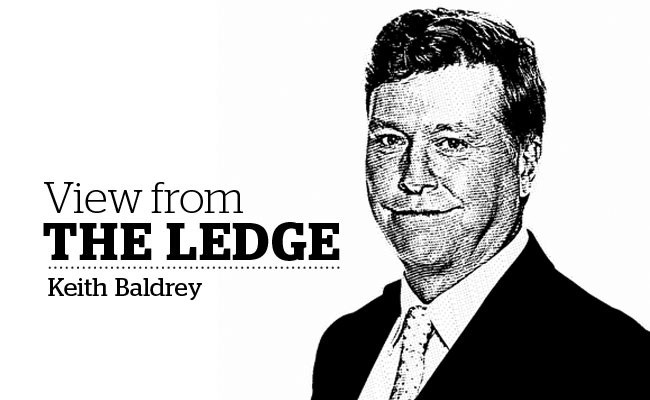Is this country in for a political shakeup the likes of which we haven’t seen in years?
It’s certainly easy to get that feeling. The “unthinkable” happened in Alberta, and one has to wonder if that was a seismic tremor that is signalling a larger earthquake to come.
The winds of change seem to be in the air, and I don’t envy an incumbent government having to test the voters right now, but that task falls first to Prime Minister Stephen Harper come this October.
While political polls must be taken with a large grain of salt, federal Conservative strategists have to be alarmed at what four polls of individual ridings in B.C. uncovered last week.
Nationally, a series of polls suggest a tight three-way race between the Conservatives, the Liberals and the New Democractic Party. The trend lines in those polls favour the New Democrats, who have been rising in popularity while the others are slumping or flatlining.
But the polling done in B.C. by Insights West on behalf of the environmental organization the Dogwood Initiative revealed something more startling: an apparent collapse of support for the Conservative party right across the board.
In four coastal ridings newly created by redistribution, the Conservative vote appears to be cut in half from what it was in the 2011 election. Even if we attach some healthy skepticism to polls, a loss of this proportion may signal that the electorate is exhibiting some extreme volatility, which is not good news for a sitting government.
Before you dismiss all political polling out of hand, consider this: polling by Insights West was done the old-fashioned way, using methods employed back when polling was generally very accurate, time and again.
The pollster, Mario Canseco, used telephones to reach a random sample of 301 voters in each riding and ensured his sample had a strong base of older voters (since they vote in much greater numbers than younger voters, so their participation in a poll is a key to make it as accurate as possible).
These were not on-line polls, or polls made up of panels of volunteers wanting to be part of a sample. Those kinds of polls, which are much, much cheaper than telephone polls, are all the rage these days and I’ve learned to become rather wary of them (interestingly, only the B.C. Liberal Party’s telephone polling correctly called the 2013 provincial election outcome).
If these riding polls showed a tight race between the parties, it would be hard to know what to read of them. That’s because if you take the 2011 voting results and “transpose” them over the new riding boundaries, it would show four tight races between the Conservatives and the NDP.
The Conservatives would be the incumbent in two ridings (Courtney-Alberni and Burnaby North-Seymour) while the NDP would be the incumbent in the other two (Cowichan-Malahat-Langford and Esquimalt-Saanich-Sooke).
But Insights West’s findings did not find any close races in the offing. About a quarter of the electorate in each riding is undecided right now, and the NDP has a significant lead in all four seats (the Liberals seem to be picking up some strength, but not enough to suggest they are contenders in these ridings).
Another startling discovery is that in three of the ridings, the NDP has a healthy lead among voters aged 55 and older. Those voters tend to vote Conservative more than the other parties, but a large number of them now say they will vote for another party (this also happened in the recent Alberta election, as lifelong Conservative voters abandoned the party in favor of the NDP).
If this is indeed happening in these four ridings, it is conceivable it may be happening in other ridings in other parts of the country where the Conservatives are incumbents or competitive.
The Conservatives insist they will remain competitive because the other two options — the Liberals and the NDP — will split the vote in enough ridings for them to win with about 40 per cent of the vote.
But another scenario may be developing: the Conservatives are indeed in a precarious position, and their support begins dropping to the point where that split on the other side doesn’t matter any longer.
The electorate seems to be very volatile right now, which means the status quo may no longer be the favored outcome of elections.
Whether this mood is maintained through the October federal vote will be fascinating to see.
Keith Baldrey is chief political reporter for Global BC. He can be reached via email at [email protected].
What are your thoughts? Send us a letter via email by clicking here or post a comment below.



